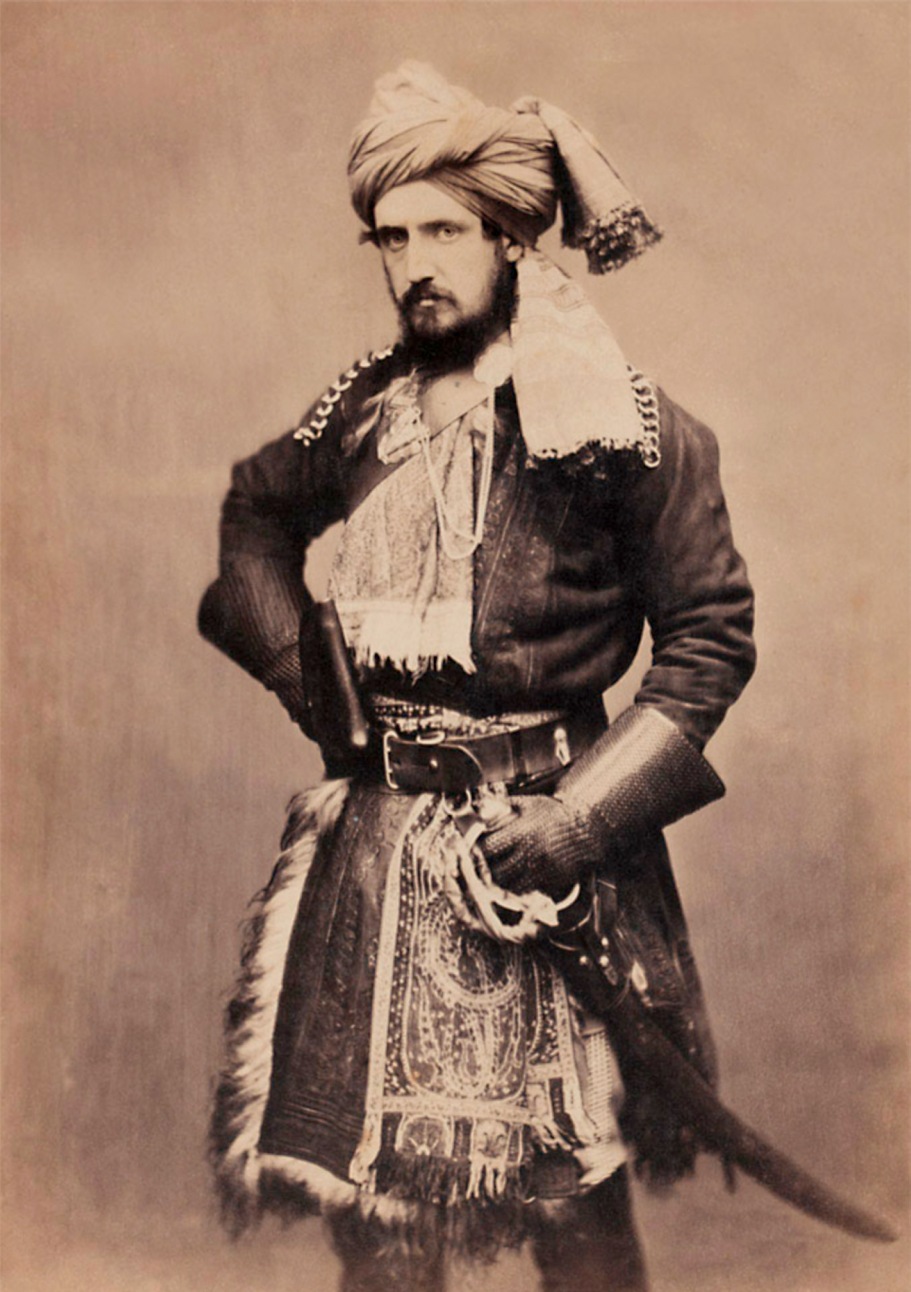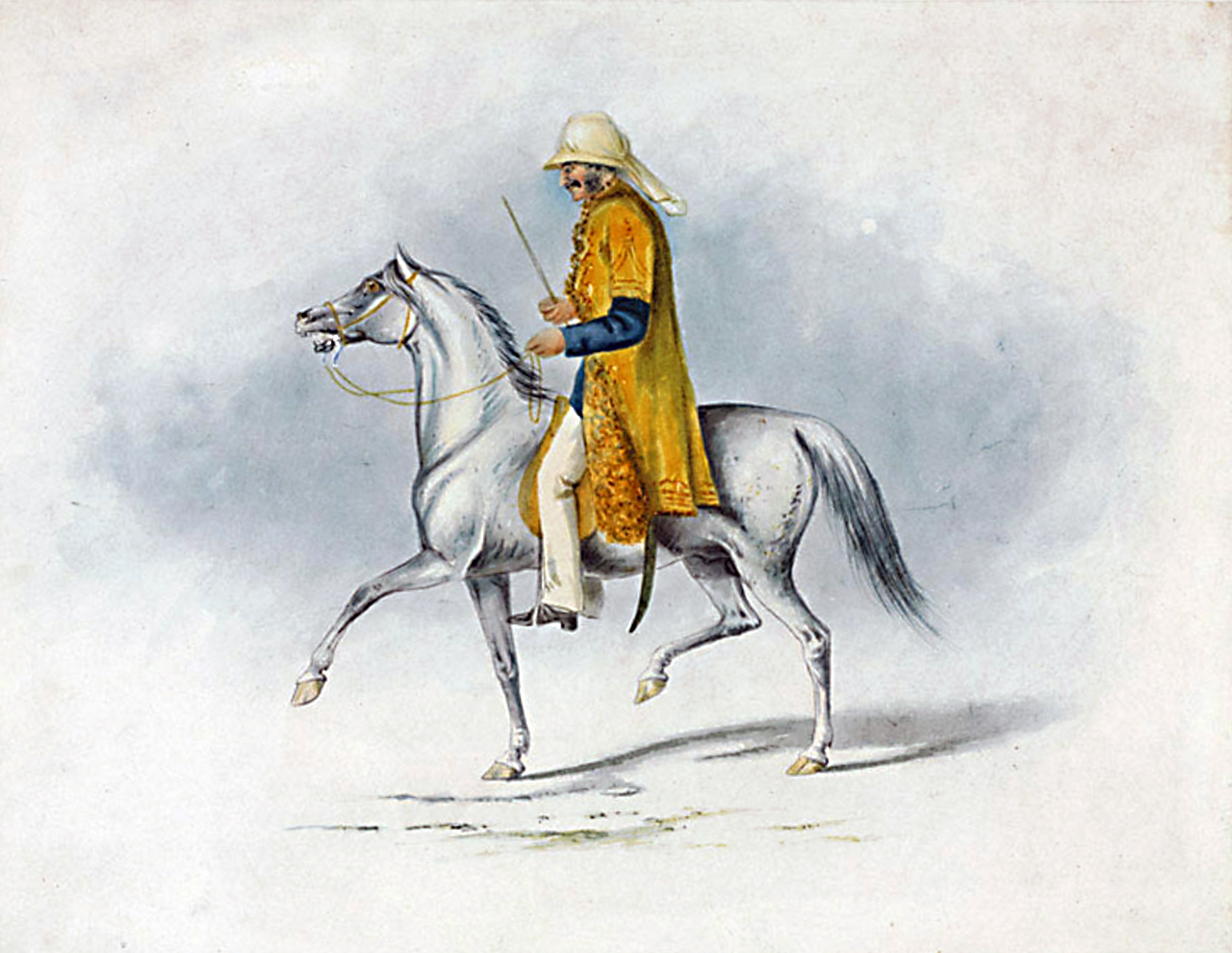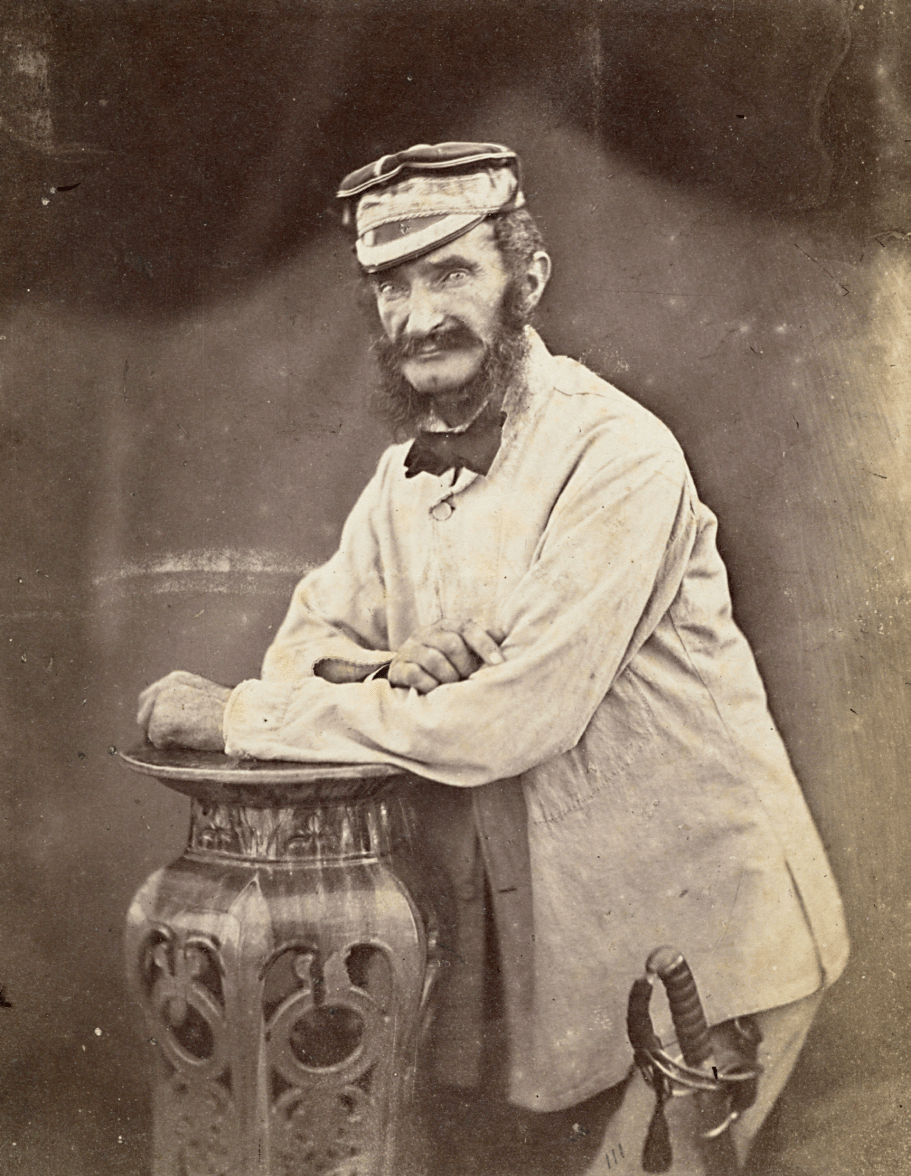The British commanders of Indian colonial regiments at times adopted aspects of Indian military dress. For example, Dighton MacNaghten Probyn (1833-1924), pictured at right, served in the Indian Mutiny and led a cavalry unit during the second Opium War. Sir James Hope Grant (1808-1875) is portrayed (scroll right) wearing a “poshteen sheepskin coat from the north-west frontier of India,” according to the National Army Museum. Grant led British forces in India, fought in the first Opium War, and in 1859 became commander of the British Army in China, which he led to rapid victory. Beato photographed him in Beijing in 1860.

Scroll right to view images
of the British commanders.

 Left: “Dighton Probyn,
Left: “Dighton Probyn,2nd Punjab Cavalry, in Indian dress,”
photographed in India, ca. 1857,
(from an album previously owned by
General Sir Sam Browne VC, 1857-1870)
National Army Museum
[1857_Dighton_Probyn_Punjab]
View in the Image Gallery


 Left: “His Excellency the
Left: “His Excellency theCommander-in-Chief, in Winter costume,”
Sir James Hope Grant, ca. 1862,
engraving after Henry Hope Crealock,
published by J. Hogarth, January 1, 1862
National Army Museum
[1862_Crealock_Hope-Grant]
View in the Image Gallery


 Left: General James Hope Grant
Left: General James Hope Grantphotographed by Felice Beato
in Beijing, 1860
National Galleries Scotland
[Beato_04-01-c-hope-grant]
View in the Image Gallery
 On viewing images of a potentially
On viewing images of a potentiallydisturbing nature: click here
Massachusetts Institute of Technology
© 2022 Visualizing Cultures